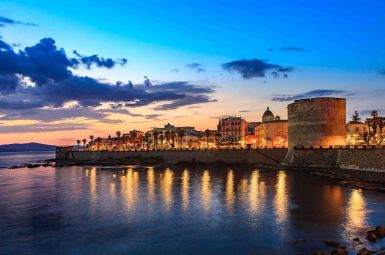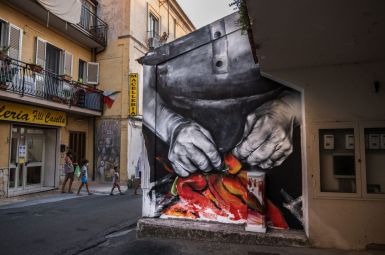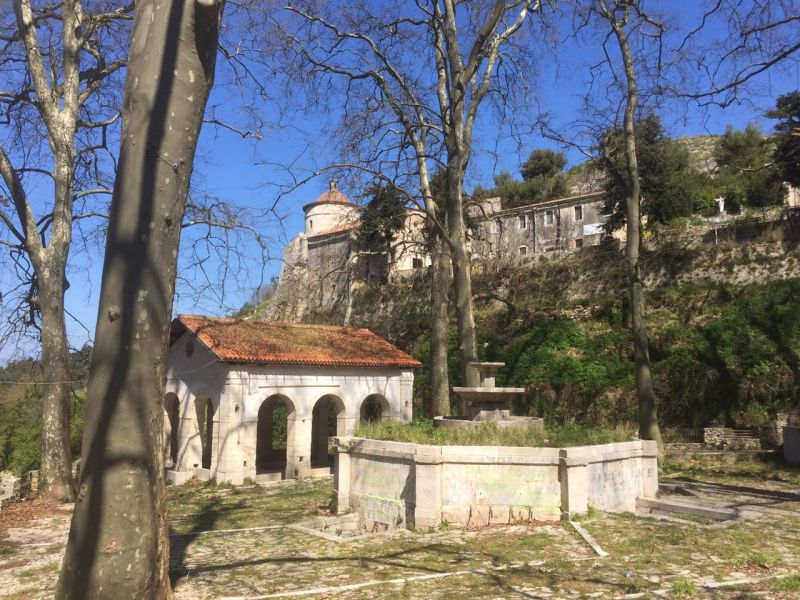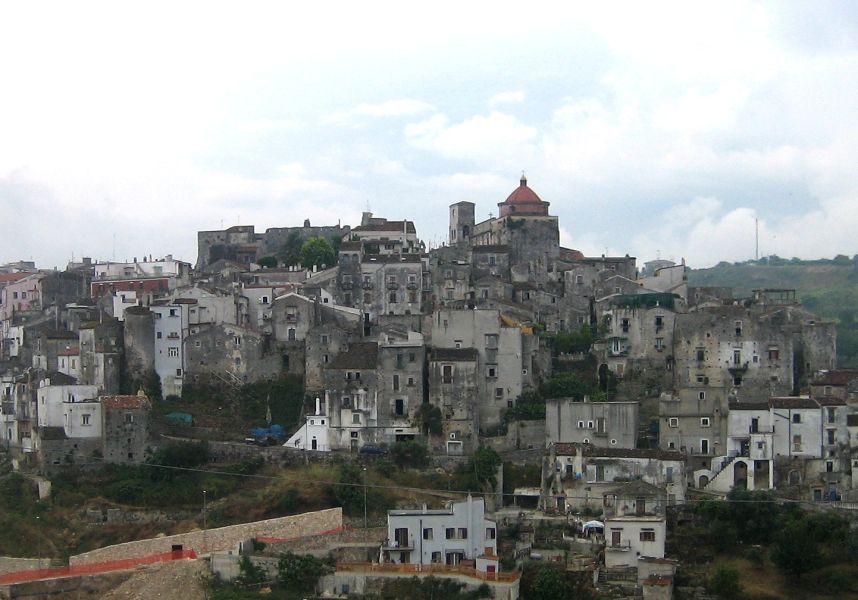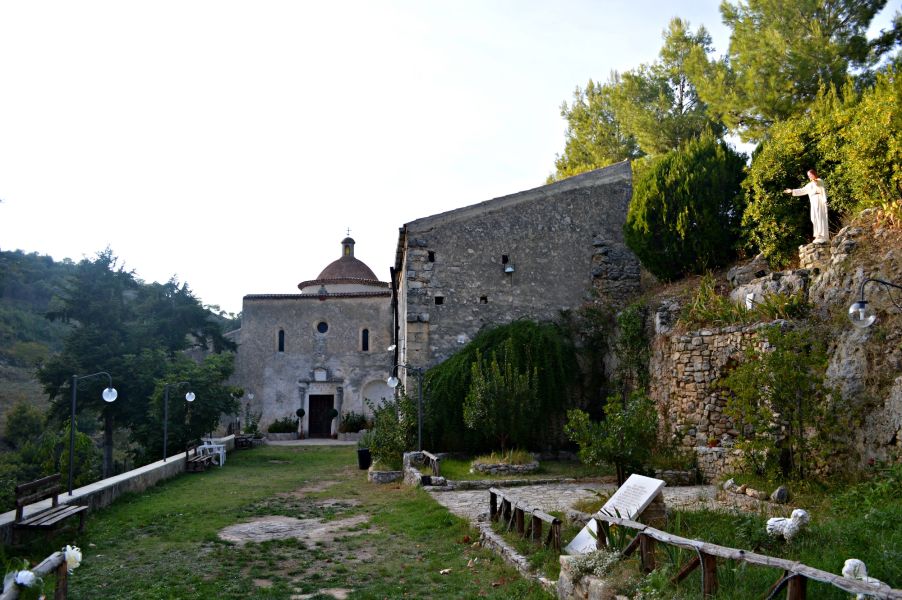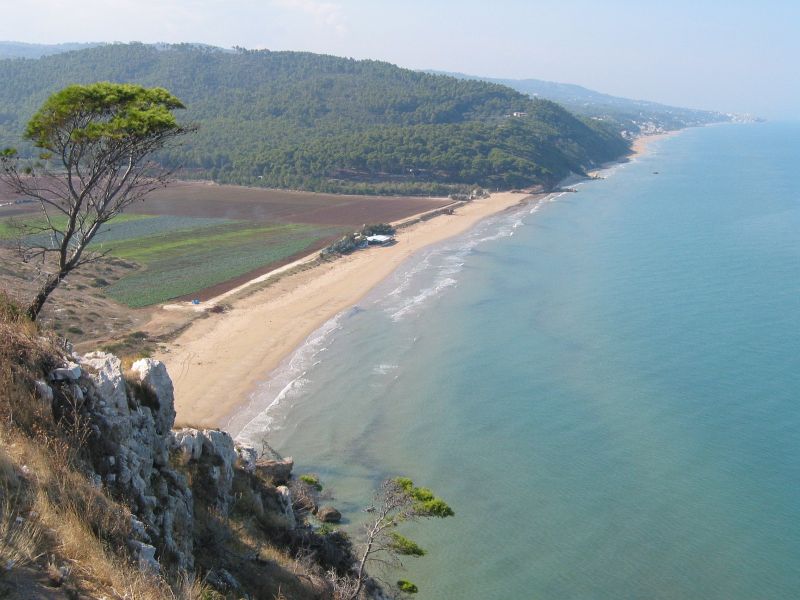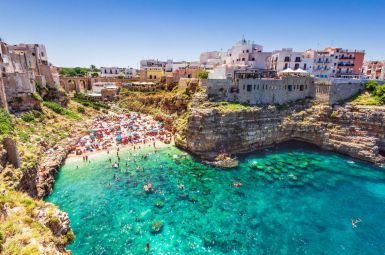
Vico del Gargano
Il Borgo di Vico del Gargano

Il Borgo d’Italia
tutto da scoprire ed esplorare
Monumenti
Storia
Il territorio di Vico del Gargano è stato abitato fin dall’antichità preistorica ma la fondazione del borgo è attestata nel 970 d.C. quando giunsero in questo luogo un gruppo di conquistatori slavi, guidati dal condottiero schiavone Sueripolo. Bisogna spostarsi lungo la linea del tempo per avere una prima fonte scritta che attesta la presenza del Castrum Vici, siamo nel 1113 ed i normanni decisero di acquistare un suolo per costruire la loro fortezza.
Il castello di Vico è stato molto amato da Federico II di Svevia che si recava spesso qui per le sue battute di caccia e per dare fastosi banchetti. Con l’avvio dell’epoca feudale sotto il segno della famiglia Caracciolo prima e della famiglia Spinelli poi, ha portato a Vico un’espansione in ambito architettonico e culturale. Questa crescita del sapere toccherà l’apice durante il secolo dei lumi, quando in questo borgo venne istituita l’Accademia degli Eccitati e venne innalzato l’Albero della Libertà.
Dal 1800 in poi la vita cittadina di Vico del Gargano segue le vicende storiche che interessano l’intero mezzogiorno. Il congresso di Vienna riporta al trono i Borboni e Vico, durante il risorgimento e gli anni tempestosi dell’unità italiana, si schiera apertamente a favore della famiglia spagnola. Questi sono anche gli anni in cui in questo borgo si avvia la coltivazione ed il commercio degli agrumi, un’attività economica che è diventata parte integrante del tessuto cittadino.
San Menaio
A San Menaio il boschetto di Pini d’Aleppo arriva a mescolarsi con la sabbia finissima della battigia. La spiaggia è una delle più belle della costa pugliese; il suo andamento lineare è interrotto solo dalla Torre dei Preposti, che aveva il compito difendere il borgo ed oggi divide il nucleo storico di San Menaio da quello più recente, chiamato “murge nere” per via di due massi che riaffiorano dall’acqua.
Castello Normanno e cinta murarie
Spulciando nell’immenso archivio di Napoli potrete trovare anche il primo documento in cui si parla di Vico del Gargano. Siamo poco oltre l’anno mille, i normanni giunti nel meridione iniziano una grande opera difensiva che interessa tutto il Sud Italia, senza eccezioni. Nel Castrum Vici viene edificato un imponente fortezza che si aggiunge alla prima cinta muraria costruita intorno al mille. Nonostante tutto questo, Vico del Gargano viene comunque attaccato dai turchi e per questo motivo il borgo si dota di un secondo sistema murario.
Passano gli anni, nel 1240 giunge sul Gargano l’imperatore Svevo Federico II che resta estasiato dal piccolo centro urbano e dal castello. Il maniero con il Puer Apuliae viene rimaneggiato nell’aspetto e nell’animo: venute meno le necessita difensive, il castello viene reso simile ad una dimora patrizia e diventa lo scenario d’eccellenza per le battute di caccia dell’imperatore e per i suoi sontuosi banchetti.
Il castello nel corso dei secoli ha subito altre modifiche importanti, fino a giungere ad avere il suo aspetto definitivo nel XIV secolo.
Nel 1856 la fortezza viene venduta dalla famiglia Savoia, che aveva necessità di recuperare le spese militari sostenute in quegli anni.
Il castello oggi ha rinunciato al suo ingresso originario, in favore di un entrata a nord- ovest, degli archi a sesto acuto anticipano l’entrata nel cortile, con a centro un pozzo per l’approvvigionamento di acqua. Poco più avanti si trova un ballatoio con due gradini, per agevolare la salita a cavallo dei cavalieri e delle dame.
Chiesa della Bellissima Vergine Assunta
Vico del Gargano è conosciuto anche come il paese delle cento chiese, per i tanti edifici di culto disseminati per le sue strade. Tra questi spicca la chiesa della Bellissima Vergine Assunta, la più antica di questo borgo pugliese.
La chiesa Madre di Vico del Gargano non ha nessuno degli importanti decori a cui siamo abituati, è una chiesa essenziale e semplice sia nel prospetto esterno che negli interni.
La facciata esterna è arricchita solo da una torre campanaria d’impianto quadrato e da una cupola a costoni, colori Rosso Terra di Siena.
L’interno è molto luminoso grazie alle vetrate e alle finestre che corrono lungo il perimetro esterno, le navate sono divise tra loro da un colonnato di archi a tutto sesto. Unico elemento di spicco sono gli undici altari, alcuni dei quali sono arricchiti da una decorazione che ricorda lo stile Barocco.
La Foresta Umbra
Quando parliamo di Foresta Umbra non abbiamo sbagliato regione, nonostante il nome inusuale siamo ancora nei confini pugliesi.
La Foresta Umbra probabilmente deve il suo nome a genti umbre che hanno abitato questa zona. L’intreccio fitto delle chiome degli alberi non lascia passare neppure i raggi solari e custodisce un immenso patrimonio di biodiversità.
Questa foresta è attraversata da quattordici sentieri ed è il luogo ideale per chi ama fare sport a stretto contatto con la natura e per chi ama osservare il da fare quotidiano dei tanti animali che abitano questa boscaglia. Nei giorni caldi l’ombra della Foresta Umbra è il riparo ideale dove rifugiarsi per fare un pic nic, fuggire dalla canicola estiva e poter passeggiare tranquillamente, concedendosi il tempo di ammirare il laghetto naturale e gli scorci di questo luogo unico.
Curiosità
Vico del Gargano, l’amore e i baci
Stringimi mentre mi baci, in questo vicolo nessuno ci vedrà. Chiudi gli occhi mentre mi baci, perché il mondo non esiste, qui non ci vede, qui non ci sente. Amami mentre mi baci, lontano dai chiacchiericci, dal profumo di caffè, dal rumore assordante.
Regalami il silenzio, mentre mi baci.
Vico del Gargano è il paese dell’amore, dolce e passionale. La sua essenza più pura si festeggia il 14 febbraio, in occasione del giorno del santo patrono, San Valentino. Le strade di questo piccolo borgo vengono addobbate con agrumi e zagare e la leggenda racconta che se si prende uno dei frutti delle decorazioni di San Valentino e lo si dona alla persona desiderata, questo si trasformerà in un elisir d’amore. Che sia vero o no, di certo Vico del Gargano è uno dei custodi privilegiati dei segreti d’amore. Il vicolo dei baci, a pochi passi dalla chiesa di Sant’Andrea, conserva secoli di parole sussurrate, sguardi d’intesa, baci silenziosi. Gli amori di questo borgo sono tutti custoditi tra le mura nude di questa stradina, che è una tappa obbligata per gli innamorati che non rinunciano ad un romantico souvenir di ricordi. Da qualche anno, in occasione di San Valentino è stato istituito un vero e proprio evento “Baciarsi a Vico”, una dolce tradizione che porta numerose coppie tra le mura del centro storico.
Le arance della Puglia
Non solo arance di Sicilia. Possono dirlo forte gli abitanti di Vico del Gargano che dal 1800 portano avanti una tradizione entrata a far parte della cultura popolare. Vico del Gargano, infatti, insieme a Rodi Garganico e Ischitella, è il principale coltivatore e commerciante di agrumi in Puglia.
Tra la foresta Umbra e il Parco Nazionale del Gargano si stende un agrumeto in cui vengono coltivati pregiate varietà di agrumi, come l’Arancia Bionda del Gargano, la Duretta e il Femminello, il limone più antico d’Italia.
Questi frutti hanno accompagnati pasti e cene d’importanti personaggi storici, tra cui anche numerosi reali.
Personaggi
Vico del Gargano: Le Voci Illustri del Borgo degli Agrumi e dell’Amore
Pensieri e Fede: L’Eredità Intellettuale e Spirituale Nata nel Cuore del Gargano
Vico del Gargano, il borgo medievale noto come “Paese degli Innamorati” per la devozione al suo patrono San Valentino, non ha solo plasmato paesaggi mozzafiato, ma ha anche dato i natali a personalità che, con la loro intelligenza e spiritualità, hanno lasciato un segno duraturo nella storia e nella cultura locale e nazionale.
1. Padre Michelangelo Manicone (1745 – 1810)
- Il Filosofo della Natura: La figura di maggior spicco nativa di Vico del Gargano è indubbiamente Padre Michelangelo Manicone, frate minore osservante. Manicone fu un ecclesiastico, filosofo, letterato e, soprattutto, un acuto naturalista.
- Precursore dell’Ecologia: È ricordato come uno dei primi ecologisti ante litteram del Meridione d’Italia. Le sue opere, in particolare “La Fisica Appula”, rappresentano una miniera di informazioni sulla flora, la fauna e le condizioni ambientali della Capitanata e del Gargano, anticipando di secoli la moderna sensibilità ecologica. La sua eredità intellettuale continua a influenzare gli studi sul territorio.
2. Cristoforo da Vico del Gargano (1906 – 1988)
- Guida Spirituale e Storico: Al secolo Francesco Iavicoli, Padre Cristoforo da Vico del Gargano è una figura fondamentale nel panorama religioso e storiografico dei Cappuccini di Foggia. Fu un dotto frate cappuccino, noto per il suo impegno nella ricerca storica e spirituale.
- Custode delle Tradizioni: Con le sue pubblicazioni e il suo ministero, ha contribuito a tramandare la devozione e le tradizioni locali, lasciando un segno profondo nella vita religiosa della comunità e negli studi sulla storia della Capitanata.
3. I Visionari dell’Intelletto (XVIII-XIX Secolo)
Vico del Gargano è stata un fertile terreno per figure di studiosi e intellettuali che hanno arricchito il dibattito culturale del loro tempo. Tra questi spiccano:
- Pietro de Finis
- Antonio Maselli
- Giuseppe Del Viscio
Questi eruditi, attivi tra il XVIII e il XIX secolo, hanno contribuito a fare di Vico del Gargano un centro di fermento culturale, dimostrando come l’isolamento del promontorio non abbia mai spento la fiamma della conoscenza e della ricerca intellettuale.
L’Omaggio Moderno: Il Legame con l’Arte
Sebbene non nativi, il borgo vanta un legame artistico singolare che ne esalta la bellezza:
- Marino Bortoluzzi (Pittore): Unico italiano ad aver frequentato il celebre Bauhaus in Germania, Bortoluzzi è legato a Vico dalla creazione di una sua celebre Via Crucis. Le stazioni, con una scelta artistica unica, non sono ambientate a Gerusalemme ma tra le suggestive strade e gli angoli di Vico, immortalando il borgo in un’opera d’arte sacra di rilievo.
Ricette Tipiche
I Tesori della Tavola di Vico del Gargano: La Tradizione tra Agrumi e Sapori Contadini
L’Essenza Garganica: Ricette Nascoste tra il Bosco e il Mare, a Vico del Gargano
Vico del Gargano, il borgo noto per i suoi profumatissimi agrumeti e la devozione a San Valentino, offre una cucina che è un perfetto connubio tra i prodotti della terra, del bosco e del vicino mare Adriatico. Le sue ricette affondano le radici nella tradizione contadina, esaltando la semplicità con l’uso sapiente di ingredienti locali, in primis l’eccellente Olio EVO del Gargano.
1. La Paposcia del Gargano
- L’Antico Cibo del Forno: La Paposcia è la vera specialità iconica di Vico del Gargano e dell’area circostante. Non è né una pizza né una focaccia, ma un pane a forma allungata, simile a una ciabatta, nato storicamente nei forni a legna. L’impasto, a base di farina, acqua, sale e lievito madre (cresenza), veniva infornato per testare la temperatura ottimale prima della cottura delle grandi pagnotte.
- Il Gusto della Semplicità: Oggi è un apprezzatissimo street food. La versione più tradizionale e autentica è condita semplicemente con Olio Extra Vergine d’Oliva locale, sale e, talvolta, aglio e origano. Nelle varianti più ricche, viene farcita con prodotti del territorio come il Caciocavallo Podolico o pomodori freschi.
2. Le Ricette di Terra e di Mare
- Strascinati con Fagioli e Cozze: Il Vico del Gargano è terra di confine gastronomico, dove la montagna incontra il mare. Gli strascinati (pasta fresca lavorata con il pollice) vengono tipicamente conditi con un sugo che unisce i sapori forti della terra e quelli delicati del mare, come i fagioli cannellini (o fave di Carpino) e le cozze, in un mash-up di sapori unico e sorprendente.
- Spezzatino di Capretto con Lampascioni: Questo piatto celebra la tradizione pastorale dell’entroterra garganico. Lo spezzatino di capretto viene cucinato in teglia o in umido e accompagnato dai lampascioni, i bulbi selvatici dal sapore amarognolo che, semilessati e cotti, aggiungono una nota distintiva e robusta al piatto.
- Pancotto con Verdure Selvagge: Espressione massima della cucina del recupero. Il Pancotto è una zuppa povera a base di pane raffermo, bagnato e cotto insieme a verdure selvatiche raccolte nel Parco del Gargano (come cavoli o marasciule), aglio e peperoncino, il tutto arricchito da un filo generoso di Olio EVO.
3. I Dolci e i Frutti dell’Amore
- Il Dolce della Sposa: In quanto “Paese degli Innamorati”, Vico del Gargano lega alla festa di San Valentino un dolce rituale. Il Dolce della Sposa è un soffice pan di Spagna, tradizionalmente ricoperto di glassa bianca o crema, che rappresenta la purezza e la dolcezza dell’unione.
- Insalata di Arance e Limoni: Data la ricchezza degli agrumeti, spesso si conclude il pasto con un’insalata rinfrescante di arance e limoni di Vico del Gargano (Presidio Slow Food), tagliati a fette e conditi in modo insolito e sapido con olio extra vergine d’oliva locale, sale e talvolta peperoncino. Un finale di pasto che è un tributo al profumo inebriante del Giardino degli Agrumi.
